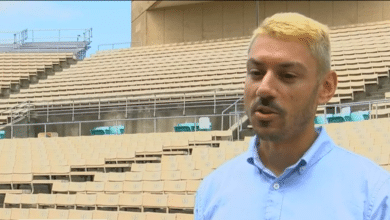Argentina ready to take major leap as lithium producer

By Natalia Kidd
Buenos Aires, May 11 (EFE).- Argentina currently ranks fourth worldwide in lithium output with just two projects in the production phase, but the steady advance of other projects and an investment boom in that sector have the country poised to take a giant leap forward.
Between 2020 and 2021, announced investments in lithium mining in Argentina rose to $3.4 billion, according to official figures.
And every week brings more announcements by companies – mainly US, Australian, Canadian and Chinese firms – about new exploration campaigns, project expansions, acquisitions and further investments, including an announcement by China’s Zijin Mining Group concerning plans to spend $380 million to build a lithium carbonate plant at the Tres Quebradas project in the northern Argentine province of Catamarca.
“Argentina has gone through a stage of major investment in exploration over the past 10 years, during which time a very important portfolio of products has been developed,” the president of the Argentine Chamber of Mining Executives, Franco Mignacco, told Efe.
According to the most recent data from the United States Geological Survey, Argentina is the world’s fourth-leading lithium producer (behind Australia, Chile and China), has the third-biggest reserves of the world’s lightest metal (behind Chile and Australia) and ranks second in lithium resources (after Bolivia).
Argentina has 38 lithium projects concentrated in three northwestern provinces (Jujuy, Salta and Catamarca), of which two are in the production stage, six are in the construction phase, two are in the feasibility stage, three are in the pre-feasibility stage, five are in the preliminary economic assessment phase and 20 are in the advanced exploration stage.
The two lithium production projects – Fenix, which is being developed by Philadelphia-based Livent; and Olaroz, a joint venture of Australia’s Allkem, Japan’s Toyota Tsusho and Argentine provincial mining company Jemse – produce a combined 40,000 tons of lithium carbonate per year.
But they have plans in the works to double their productive capacity.
Additionally, the Cauchari-Olaroz project owned by Minera Exar (a joint venture of Canada’s Lithium Americas, China’s Ganfeng Lithium and Jemse) is expected to enter the production stage in the second half of the year with a projected output of 40,000 tons annually.
Argentina, therefore, could achieve annual production of 120,000 tons by 2023-2024.
“With those three projects alone, Argentina would move up to third place worldwide, and we’d be very close to battling for second place with Chile,” Mignacco, the president of Minera Exar, said.
According to official estimates, the current portfolio of lithium projects in Argentina has a productive potential of 328,500 tons per year of lithium carbonate.
In a world in which the global supply of lithium is limited, growing demand for that “white gold” used to make lithium-ion batteries for electric cars and other consumer electronic products is causing a spike in international prices.
The price per ton of battery-grade lithium carbonate has skyrocketed from $9,000 a year ago to around $75,000 at present, a level that makes many projects in Argentina more economically viable.
“We’re seeing very promising demand going forward. It’s estimated that by 2040 current demand will triple, which greatly accelerates all the upcoming projects worldwide, not just in Argentina,” Mignacco said.
According to Jorge Gonzalez, the Argentine government’s director of mining promotion and economy, the South American country has a competitive edge over its rivals because the operating costs associated with lithium extraction from salt flats are lower than those associated with the mining of lithium from hardrock pegmatite deposits – a form of production in which Australia is the global leader.
Mignacco said Argentina also has comparative advantages relative to Chile and Bolivia, the other two vertices of the so-called South American lithium triangle.
Lithium extraction in Bolivia is state-controlled, while in Chile (where lithium has been declared a strategic resource) the government has the power to require mining companies to carry out part of their lithium value-added processes in Chile.
“Argentina, by not taking any steps to assert state control, nationalize the resource or declare it strategic, today has an investment flow of more than $4.5 billion to $5 billion in a portfolio of projects that the other countries don’t have,” Mignacco said. EFE





